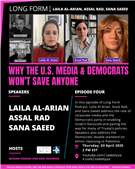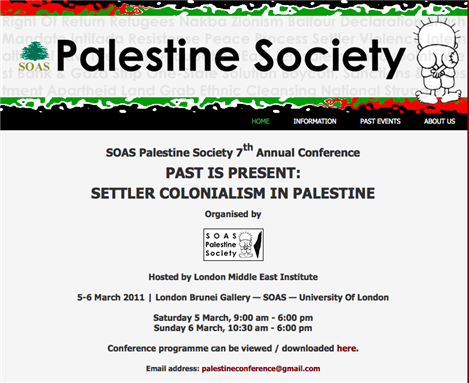[The following report was issued by International Crisis Group on 20 December 2012.]
Extreme Makeover? (II): The Withering of Arab Jerusalem
Executive Summary
For many Arab East Jerusalemites, the battle for their city is all but lost. Settlements have hemmed in their neighbourhoods, which have become slums in the midst of an expanding Jewish presence; trade with the West Bank has been choked off by the Separation Barrier and checkpoints; organised political life has been virtually eradicated by the clampdown on Palestinian institutions; and their social and economic deprivation is rendered the more obvious by proximity to better-off Jewish neighbours. Israel may not have achieved its demographic goal, but its policies have had profound effects: Arab Jerusalemites are disempowered and isolated from the Palestinian polity as rarely before. Since 1967, Palestinians overwhelmingly have boycotted Israeli institutions in the city on the grounds that acting otherwise would legitimate occupation. This is understandable, but potentially obsolete and self-defeating. As Palestinian Jerusalemites increasingly are adrift, bereft of representation, and lacking political, social, and economic resources, it is time for their national movement to reassess what, no longer a considered strategy, has become the product of reflexive habit.
Palestinian political life in Jerusalem has changed drastically since the Oslo Accords excluded the city from the temporary governing arrangements in the West Bank and Gaza. National institutions that sprung up in Ramallah competed for the spotlight with and eventually came to overshadow historic Palestine’s traditional political, economic and social capital. In the 1990s Jerusalem held its own, barely, in no small part due to the outsized role played by a scion of one of its venerable families, Faysal Husseini. But the city never recovered from the triple blow of Husseini’s death in 2000; the outbreak of the second intifada that same year and the consequent limitations on access to the city; and the subsequent shuttering of Orient House, the Jerusalem headquarters of the Palestine Liberation Organisation (PLO). The Palestinian Authority (PA), too distant and ineffectual, never provided an alternate address for its public in the Holy City. Fatah and Hamas withered as Israel prevented them from organising.
The city’s large families filled the authority gap to some extent, but they could not stop the dissolution of the social fabric and even became one of its agents: with East Jerusalem largely a no-go area for Israel’s police except when the country’s own security interests were threatened, families got into the crime business. East Jerusalem today is a rough and angry place. As for local popular committees, despite their political roots in the first intifada and before, they have had to focus on re-stitching the social fabric. The Holy Esplanade is the only site where mobilisation seems to have a purpose – with predictably incendiary results, particularly in light of increasing Jewish activism there.
With Jerusalem cut off from its natural West Bank hinterland, Palestinian citizens of Israel and Israeli activists are increasingly entering the fray. Efforts of Israeli and international solidarity movements on behalf of Arab residents confronting Jewish settlers have ebbed and flowed, but on the whole they have not gained much purchase. The northern branch of the Israeli Islamic Movement, an Israeli Arab group under the leadership of Shaykh Raed Salah, has played a much greater role. Although its capacity for large-scale mobilisation in Jerusalem is limited, Arabs in the city appreciate the boost to the economy provided by the pilgrims it brings, as well as Salah’s loud voice on behalf of them and the Islamic holy sites. But many also consider his approach excessively religious and his language vituperative. Israel certainly does, deploring his incendiary and sometimes hateful rhetoric.
Arab Jerusalemites – who in 1967 overwhelmingly chose permanent residency over Israeli citizenship – have resorted to formal channels to protect a valuable status that seems ever more precarious given Israeli revocations of residency and construction of the Separation Barrier that has left some 50,000 Arab Jerusalemites on its east side. Numbers applying for Israel citizenship have grown over the past several years; the subject no longer is taboo. Some also have started to participate in municipal activities, including lobbying City Hall for their due.
Without ever quite feeling that they fit in, Arab Jerusalemites have developed ties to the western part of the city in terms of school, work, and socialising. Their national address is Ramallah, but their executive and legislative representatives do not have jurisdiction over them; meanwhile, their ostensible municipal representatives are their occupiers. For the vast majority of the population, this schizophrenic reality is the only one they have known.
A population that feels abandoned by everyone is in nobody’s interest. It certainly does no good to the Palestinians themselves, but it does not help Israel either. Boundaries are porous, particularly for drugs and criminality; the problems confronted by Arab Jerusalemites do not stop at neighbourhood borders. The absence of a credible leadership likewise will hinder any effort to manage future tensions and prevent an escalation. Finally, and more broadly, any future political arrangement between Israelis and Palestinians will require a cohesive and capable Palestinian community in East Jerusalem.
The default Palestinian strategy, strongly urged by the leadership, long has been to boycott all voluntary contact with the Jerusalem municipality. Reluctance to engage with Israeli institutions is understandable. Palestinians fear this would create the impression of endorsing Israel’s claim to the city. In the early years after 1967, the boycott was an active strategy that aimed at and achieved concrete if minimal gains, primarily in the form of limited Arab autonomy. This made sense in the 1960s and 1970s when East Jerusalem still was largely distinct. But today it has been simultaneously marginalised from and integrated into West Jerusalem: marginalised, in that what used to be an autonomous city centre now is just a crowded and hemmed-in neighbourhood, with poor services and infrastructure badly in need of updating; integrated, in that no small number of Arab Jerusalemites work, study, and socialise on both sides of the Green Line, and the roads, light rail and utilities that run through the eastern half are central to the entire city’s functioning.
As currently devised, the boycott largely is an artefact of a bygone era. It is a product of inertia more than of conscious deliberation. It has become a symbolic form of politics that covers an absence of politics. From a Palestinian perspective, it arguably carries advantages – reinforcing separateness and identity while refusing to legitimise occupation – but also unmistakable costs. The material and distributive dimensions of politics have been left to the side; the question of how the community can capture resources to strengthen itself is not only unanswered but unasked. Ultimately, the absent national debate about how to maximise Palestinian power in the city has facilitated both Israel’s and the Palestinian leadership’s evasion of responsibility.
However difficult, a Palestinian discussion about whether the current boycott strategy makes sense is long overdue. Such self-examination could yield any number of potential responses: that it still does; that it needs revision; or that it ought to be abandoned wholesale. Too, there are several options for adjustment: Palestinian East Jerusalemites could stand in municipal elections and vote for candidates who are Palestinian citizens of Israel; they could establish a shadow municipality in Ramallah; or they could try to set up a kind of collective representation that works in concert with the Israeli municipality. Even asking the question of whether the boycott should be tweaked or ended will be anathema to many Palestinians. But the question of Palestinian strategy, in Jerusalem and beyond, is greatly in need of rethinking, and until difficult and unpleasant issues are raised, will not be answered.
Recommendations
To the Palestinian Authority and the Palestine Liberation Organisation:
- Take steps to reduce fragmentation and duplication of efforts concerning Jerusalem, notably by creating a single address, headed by an official with access to all parts of the Jerusalem Governorate, to spearhead assistance to city residents.
- Verify carefully allegations of Israeli impropriety in the Old City and at Islamic holy sites in cooperation with international organisations and particularly the UN Education Social and Culture Organisation (UNESCO), while refraining from levelling false charges.
To the Palestine Liberation Organisation:
- Re-evaluate, within a restructured PLO, whether boycotting all voluntary contact with Israeli institutions in Jerusalem remains effective.
- Begin, in preparation for such a re-evaluation, a dialogue, both in East Jerusalem and at the national level, about what kinds of representative structures might be set up in Jerusalem.
- Evaluate on a case-by-case basis municipal initiatives by East Jerusalemites that aim at enhancing the Palestinian community’s material welfare.
To the European Union (EU):
- Keep East Jerusalem on the diplomatic agenda by implementing recommendations of the 2012 EU Heads of Mission report on Jerusalem.
- Provide funding to Arab organisations in East Jerusalem and push back against Israeli pressure not to do so.
To Arab League Member States:
- Fulfil funding pledges to the PA and to Jerusalem, particularly the $500 million promised by the 2010 Arab League Summit in Sirte.
To the Government of Israel and the Jerusalem Municipality:
- Launch a dialogue about what kinds of representation for Arab Jerusalemites – including, potentially, empowered minhalim kehilatiim (neighbourhood councils) or more broadly inclusive bodies – might be established.
- Grant Jerusalem residency to West Bankers caught on the west side of the Separation Barrier if plans for redefining the area of municipal service provision in alignment with the Separation Barrier are put into effect, and do not withdraw it from Jerusalemites living on its east side.
- Reopen the Jerusalem Chamber of Commerce and Orient House as required by phase one of the Quartet’s 2003 Roadmap for Israeli-Palestinian peace.
To Members of the Quartet (European Union, Russia, UN Secretary-General, U.S.):
- Encourage the Palestine Liberation Organisation and Government of Israel to take the above steps.
[Click here to download the full report.]
![[ICG logo. Image from crisisgroup.org]](https://kms.jadaliyya.com/Images/357x383xo/ICGlogoweb.jpg)

















